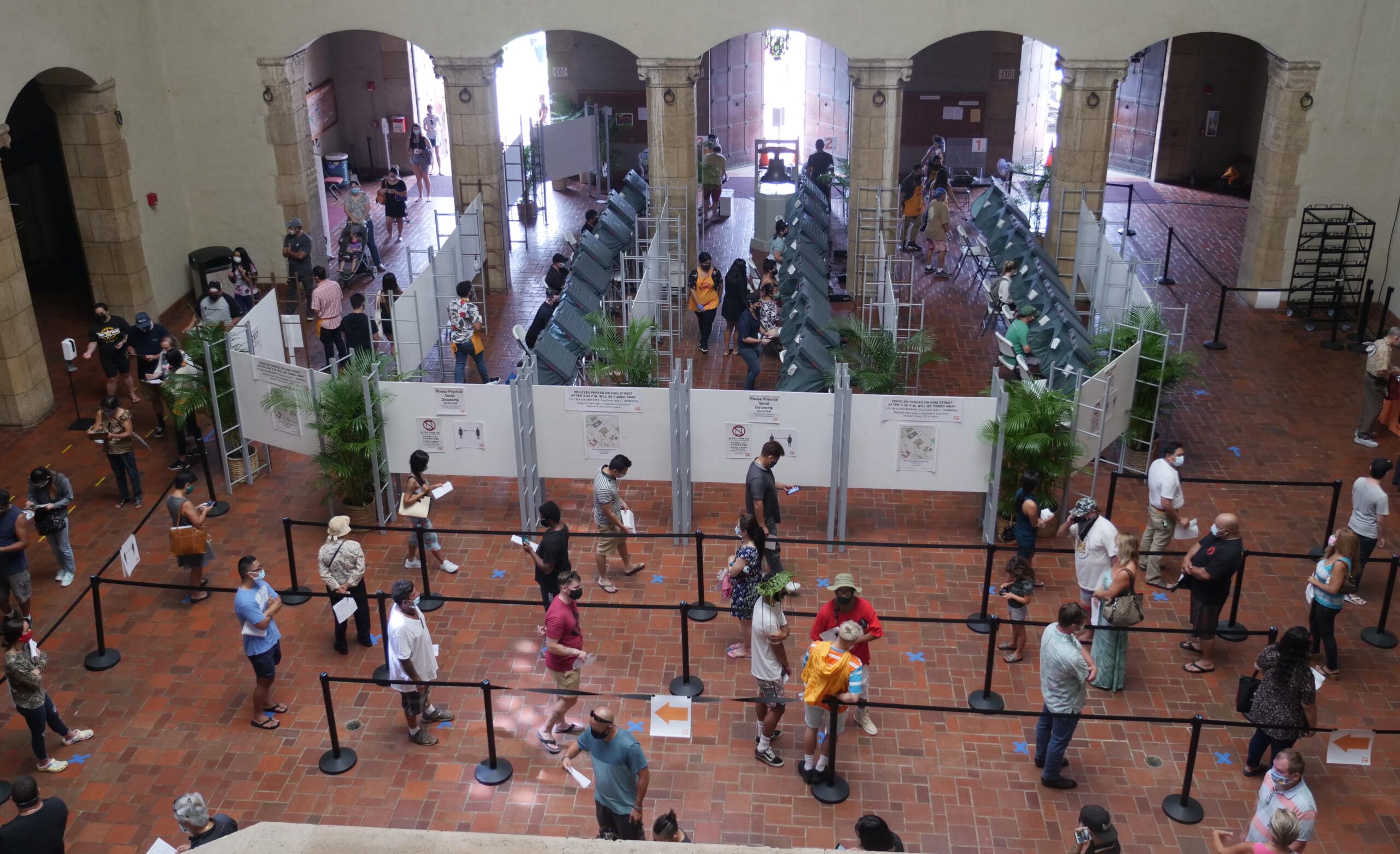| Benjamin Reilly ∙ Honolulu Civil Beat |
Australia and Hawaii share a lot in common: surf, beaches, weather.
When it comes to electing our political representatives, however, there is one key difference.
For over 100 years, Australians have used ranked choice voting, known as RCV, which allows voters to indicate their preference between candidates, rather than the single “take it or leave it” choice used in much of the United States, including Hawaii.
”There is no room under RCV for narrow or extremist positions at odds with majority of the electorate.
Hawaii’s Legislature is currently considering a bill — Senate Bill 2162 — to introduce RCV for one-off special vacant county council seats and federal elections. If successful, Hawaii would join Maine and Alaska, and major cities such as San Francisco, Oakland, California, and Minneapolis, in choosing some or all of their politicians this way.
There were several reasons RCV is superior to the current system.
First, RCV guarantees that any elected member will be chosen by a majority of the community, either outright or after all rankings are counted, rather than the minority victories and split-votes that can and often do occur under plurality voting.
In 2010, Hawaii faced this issue when Republican Charles Djou won a special federal election with only 39% of the vote after Colleen Hanabusa and Ed Case split the almost 60% Democratic vote between them. The same year, a vacant county council special election saw a tea party Republican, Tom Berg, win with just 18% of the vote in a 14-candidate split field.
Similar majority-denying outcomes spurred Australia’s introduction of RCV a century ago, while in Maine and Alaska, split votes leading to the election of unpopular and unrepresentative Governors from the minority party (Democrats in one state, Republicans another) were a key factor in the adoption by initiative poll of RCV.
In both cases, voters rebelled at being represented by politicians clearly at odds with most of their constituents.
Such unrepresentative results are not possible under RCV. Instead, if no candidate has a majority of first rankings, successive rounds sees the candidate with the lowest support eliminated and their ballots transferred according to the next candidate ranked, until one has achieved an absolute majority.
Politicians elected this way can thus claim a true majority mandate for their victory.
Less Polarized Politics
This majority mandate is key to a second advantage: less polarized politics. There is no room under RCV for narrow or extremist positions at odds with majority of the electorate. This is one reason why Australian politics has remained relatively centrist, without the polarization seen in the United States and other Western democracies in recent years. Big parties seek to win not only their own first-choice votes, but pick up preference flows from smaller parties too.
The center-left Labor Party, for instance, relies on voters for the smaller Green Party choosing it as a “second best” option, and has shifted its policies to incorporate environmental issues accordingly.
The main center-right Coalition similarly uses RCV to encourage its supporters to rank both its constituent Liberal and National parties when they complete their ballot.
This process has generated a third benefit: RCV encourages politicians to cut deals with other candidates, not just their allies but sometimes their competitors too, in the course of election campaigns. These deals can be the basis for negotiation and cooperation once in government.
While RCV does not make politicians embrace their opponents or be nice to their enemies, it does give them a reason to at least talk — in stark contrast to the situation in Washington, D.C., today, where Democrats and Republicans are no longer on speaking terms.
The biggest beneficiaries of RCV, however, are ordinary voters who are not committed supporters of any party. Such voters can choose to vote for a party of their choice with the first rank, and then give a second or third-choice vote for others, without worrying that their vote is going to be “wasted.”
Politicians elected this way can thus claim a true majority mandate.
RCV also allows third-party candidates to come through the field as a compromise or “least unpopular” choice from second (or very rarely third) place and win the seat. Australia has seen a new wave of female Independents elected this way in recent elections. Maine’s Jared Golden (the most centrist member of the U.S. House of Representatives on some measures) also won this way in 2018.
But such “come from behind” victories are the exception, not the norm. In most districts, the first-count leader wins, often without second preferences ever being counted. But as long as election outcomes are uncertain, campaigning politicians still have an incentive to gain the broadest support as possible, and to avoid muckraking or negativity that could cost them transfer votes.
RCV is not perfect. It asks more of voters, and more of electoral officials, than many other electoral systems. But it also gives more in return, subtly changing the incentives politicians face during campaigns and also in government, and giving citizens much more ability to make their vote count. Australia’s experience suggests it would be a good choice for Hawaii.





